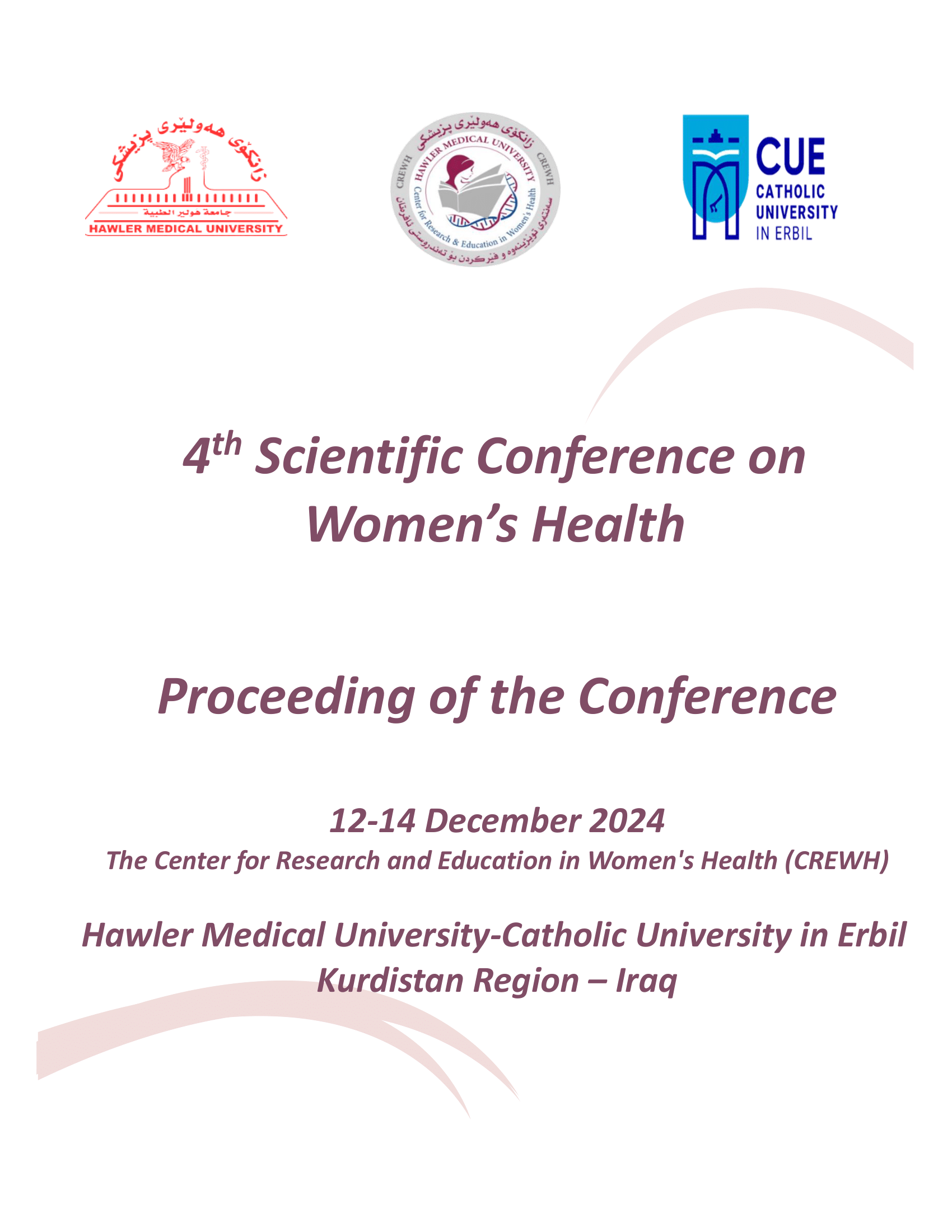Ultrasound follow up for Stable fibroadenoma after nine months in young age women: no more evaluation required
DOI:
https://doi.org/10.15218/crewh.2024.02Keywords:
Breast, fibroadenoma, ultrasonogram, Unchanged breast mass and Fine NeedleAbstract
Background and objective: To evaluate the stable fibroadenoma within (9 months) follow-up in patients with breast medical report, after a diagnosis of an image-guided Ultrasonography, to release stress on young age women and discharge.
Methods: A prospective study of 51 cases attended to breast diagnostic center and breast clinic with breast mass (single or multiple) from January 2018 to June 2022. Patients age between 15 to 35 years old women included in this study.
Results: 51 patients (15-35) years of age were included , all participants were classified as Fibroadenoma on Breast Imaging-Reporting from the first visit. Mean size was (14.33 ± 4.81) mm . Upper outer quadrants of the breasts had the greatest number of lesions. US images showed an oval shaped, well defined homogeneous, hypoechoic solid mass of less than 25mm in maximum dimensions and no internal calcification or distal acoustic shadowing were noted. The patients were invited to come back at intervals of three months from first visit and six months from the second visit for clinical examination and follow up breast US.
Conclusions: Our results of US-guided of breast FA provide evidence that the method is promising, efficient and safe. Although after 3 months US treatment session results in stable of FA volume, the 9 months US-guided significantly without changing degree of volume. US-guided may become most sensitive diagnostic modalities of breast FA.
References
Rodden A.M.: Common breast concerns. Prim Care., 2009; 36: 103–13.
Cerrato F., Labow B.I.: Diagnosis and management of fibroadenomas in the adolescent breast. Semin Plast Surg., 2013; 27: 23–5.
D’Orsi CJ, Sickles EA, Mendelson EB, Morris EA: ACR BI-RADS® Atlas, Breast Imaging Reporting and Data System, ed 5. Reston, American College of Radiology, 2013 4. Feliciano YZ, Freire R, Net J, Yepes M. Ductal and lobular carcinoma in situ arising within an enlarging biopsy proven fibroadenoma. BMJ Case Rep. 2021 19;14 5. Neville G, Neill CO, Murphy R, Corrigan M, Redmond PH, Feeley L, Bennett MW, O'Connell F, Browne TJ. Is excision biopsy of fibroadenomas based solely on size criteria warranted? Breast J. 2018 ;24:981-85.
Dixon JM, Dobie V, Lamb J, Walsh JS, Chetty U. Assessment of the acceptability of conservative management of fibroadenoma of the breast. Br J Surg. 1996;83:264–65.
Carter BA, Page DL, Schuyler P, Parl FF, Simpson JF, Jensen RA, et al. No elevation in long-term breast carcinoma risk for women with fibroadenomas that contain atypical hyperplasia. Cancer. 2001;92:30–6.
Worsham MJ, Raju U, Lu M, Kapke A, Botttrell A, Cheng J, et al. Risk factors for breast cancer from benign disease in a diverse population. Breast Cancer Res Treat. 2009;118:1–7.
Sklair-Levy M, Sella T, Alweiss T, Craciun I, Libson E, Mally B. Incidence and management of complex fibroadenomas. AJR Am J Roentgenol. 2008; 190:214–18.
Harvey JA, Nicholson BT, Lorusso AP, Cohen MA, Bovbjerg VE. Short-term follow-up of palpable breast lesions with benign imaging features: evaluation of 375 lesions in 320 women. AJR Am J Roentgenol. 2009;193:1723–30
Gupta A., Zhang H., Huang J.B.: The Recent Research and Care of Benign Breast Fibroadenoma: Review Article. Yangtze Medicine, 2019; 3: 135–41.
Namazi A., Adibi A., Haghighi M., Hashemi M.: An Evaluation of Ultrasound Features of Breast Fibroadenoma. Adv Biomed Res., 2017; 6: 153
Guillez K., Callec R., Morel O., Routiot T., Mezan de Malartic C.: Treatment of fibroadenomas by high-intensity focused ultrasound: What results? Review. Gynecol Obstet Fertil Senol., 2018; 46: 524–29.
Devolli-Disha E, Manxhuka-Kërliu S, Ymeri H, Kutllovci A. Comparative accuracy of mammography and ultrasound in women with breast symptoms according to age and breast density. Bosn J Basic Med Sci 2009;9:131-6.
Rjosk-Dendorfer D, Reu S, Deak Z, Hetterich H, Kolben T, Reiser M, et al. High resolution compression elastography and color doppler sonography in characterization of breast fi broadenoma. Clin Hemorheol Microcirc 2014;58:115-25.
Kovatcheva R, Guglielmina JN, Abehsera M, Boulanger L, Laurent N, Poncelet E. Ultrasound-guided high-intensity focused ultrasound treatment of breast fibroadenoma-a multicenter experience. J Ther Ultrasound. 2015;3:1.
Marincola BC, Pediconi F, Anzidei M, Miglio E, Di Mare L, Telesca M, et al. High-intensity focused ultrasound in breast pathology: non-invasive treatment of benign and malignant lesions. Expert Rev Med Devices. 2015;12:191–9
Ali and Talaat., Ultrasound Lexicon in diagnosis and management of breast fibroadenoma: when to follow up and when to biopsy. Egyptian Journal of Radiology and Nuclear Medicine (2020) 51:17 19. Y. Peng et.al Clinical practice guideline for breast fibroadenoma: Chinese Society of Breast Surgery (CSBrS) practice guideline (2021)
R. Kovatcheva et al. Long-term efficacy of ultrasound-guided high-intensity focused ultrasound treatment of breast fibroadenoma. J.Th. Ultrasound .2017
Downloads
Published
How to Cite
Issue
Section
License
Copyright (c) 2025 Rewan Hussein Hasan, Dena Sherdil Saleem, Ronak Taher Ali

This work is licensed under a Creative Commons Attribution-NoDerivatives 4.0 International License.











